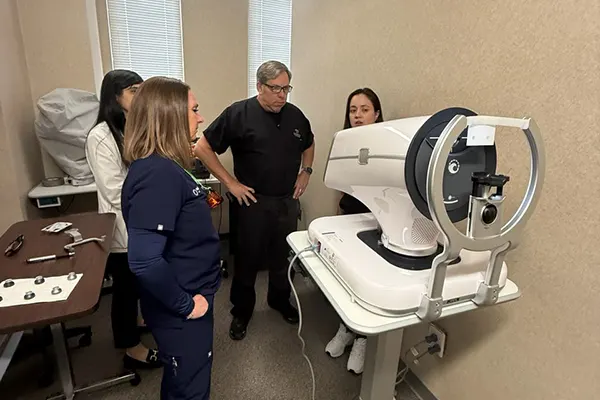Conjunctivitis
What is Conjunctivitis?
Conjunctivitis is an inflammation or infection of the conjunctiva, the thin transparent layer of tissue that lines the inner surface of the eyelid and covers the white part of the eye. Conjunctivitis, often called “pink eye,” is a common eye disease, especially in children. It may affect one or both eyes. Some forms of conjunctivitis can be highly contagious and easily spread in schools and at home. While conjunctivitis is usually a minor eye infection, sometimes it can develop into a more serious problem.
Conjunctivitis may be caused by a viral or bacterial infection. It can also occur due to an allergic reaction to irritants in the air like pollen and smoke, chlorine in swimming pools, and ingredients in cosmetics or other products that come in contact with the eyes.
People with conjunctivitis may experience the following symptoms:
- A gritty feeling in one or both eyes
- Itching or burning sensation in one or both eyes
- Excessive tearing
- Discharge coming from one or both eyes
- Swollen eyelids
- Pink discoloration to the whites of one or both eyes
- Increased sensitivity to light
Conjunctivitis can be diagnosed through a comprehensive eye examination. Testing, with special emphasis on evaluation of the conjunctiva and surrounding tissues, may include:
- Patient history to determine the symptoms the patient is experiencing, when the symptoms began, and the presence of any general health or environmental conditions that may be contributing to the problem.
- Visual acuity measurements to determine the extent to which vision may be affected.
- Evaluation of the conjunctiva and external eye tissue using bright light and magnification.
- Evaluation of the inner structures of the eye to ensure that no other tissues are affected by the condition.
Supplemental testing may include taking cultures or smears of conjunctival tissue, particularly in cases of chronic conjunctivitis or when the condition is not responding to treatment.
Using the information obtained from these tests, your optometrist can determine if you have conjunctivitis and advise you on treatment options.


